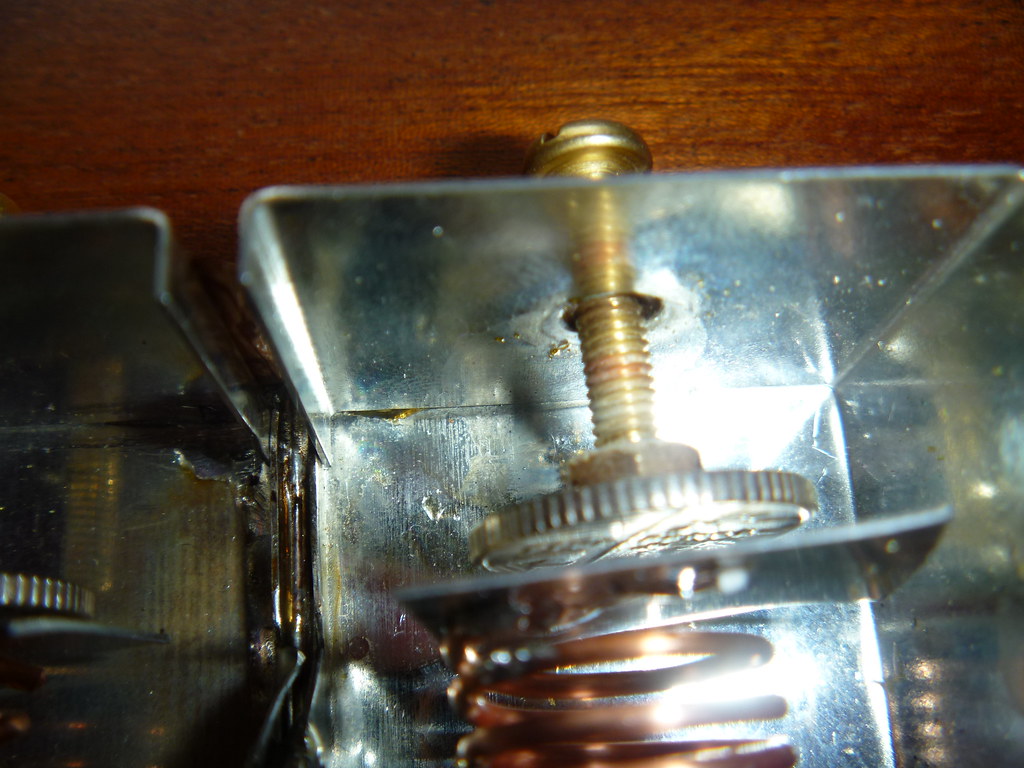In reply to G3CWI:
I was surprised at the response that my little experiment generated. I was trying to see if simple stubs could be used to reduce the blocking problem due to pager transmitters. Rather than starting on a mathematical treatise I decided to put something together and try it. The first iteration used thin coax (RG59 I think), I couldn’t see much difference between the response at 145MHz and 153MHz on a stub that was cut for 153MHz.I then repeated the experiment with some larger coax that I had in the junk box. This showed a bit more promise. The coax has a single centre conductor, the shield is a solid copper tape with a copper braid over the top of it and it is about 12mm diameter. The stubs and associated tee pieces and fittings were bulky, heavy and fiddly to set up, Trimming the stubs was messy. I though about using capacitors to tune the stubs, but how do you protect them in the rucksack environment. I used three stubs cut for 153 MHz spaced 1/4 wave apart I had some time yesterday and set about doing some measurements, The 153 MHz signal was attenuated by about 35dB , the only problem was that the 145 MHz signal was about 10dB down, and the vswr on 145MHz was not good. When I was using this contraption the other day it was only in the receive path, with so many PL259 connectors in line I was going to have losses!!! But also I was concerned as to how bending the coax may have affected the frequency response ,vswr etc. I was running the hand-held at 1Watt just in case I inadvertently transmitted through it.
It seems that bigger (or should that be better) coax improves the situation. thinking about it, stubs are tuned circuits, I suspect that I need a higher Q so that the 145MHz signal would not be attenuated . Maybe LDF4-50 or LDF5-50, but this is getting too bulky, too heavy and too expensive. The rig only cost about £120 including adapter so I don’t want to spend more than about £20 to solve this problem
I do not think that this is the right way to go.
What is needed is a high Q and 1/4 wave transmission line, but small size and easy to adjust, robust, and cheap, preferably junk box.
The conversation that I had with you the other day about helical resonators got me rummaging in my junk box again. I wonder if a metal paint can(Hammerite Satin Black ,unfortunately still full, but that’s another job!!) 4 inches diameter 4 1/2 inches long could be used as the outside of a helical resonator, bolt/solder the helix and the rf connector to the lid, drill a hole in the centre of the base and solder a brass nut on , brass screw though base to give tuning cap, from a mechanical point of view the helix will probably need to be self supporting so 4mm or 5mm brass rod probably 4 or 5 turns and about 50mm dia, fed maybe 1/2 turn or less from the earthy end, this should possibly work. I’m looking at chapter 12 page 12.24 of the 2007 ARRL handbook, the nomograph looks a bit daunting, but quite informative. They mention silver soldering and silver plating for optimum results, but… Anyhow for the price of an N type and a bit of brass rod it may be worth a go. Its got to be smaller than the coaxial cable alternative.
Food for thought, I look forward to your comments.
73 Colin



